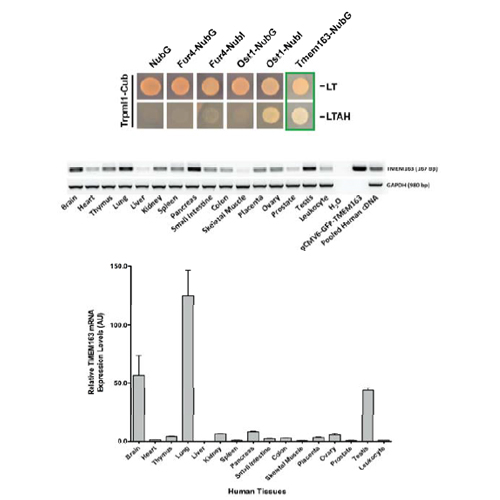Cellular Zinc Levels Are Modulated By Trpml1-Tmem163 Interaction.
15-Aug-2014
Mucolipidosis type IV (MLIV) is caused by loss of function mutations in the TRPML1 ion channel. We previously reported that tissue zinc levels in MLIV were abnormally elevated; however, the mechanism behind this pathologic accumulation remains unknown. Here, we identify transmembrane (TMEM)-163 protein, a putative zinc transporter, as a novel interacting partner for TRPML1. Evidence from yeast two-hybrid, tissue expression pattern, co-immunoprecipitation, mass spectrometry, and confocal microscopy studies confirmed the physical association of TMEM163 with TRPML1. This interaction is disrupted when a part of TMEM163’s N-terminus was deleted. Further studies to define the relevance of their interaction revealed that the plasma membrane (PM) levels of TMEM163 significantly decrease when TRPML1 is co-expressed in HEK-293 cells, while it mostly localizes within the PM when co-expressed with a mutant TRPML1 that distributes mostly in the PM. Meanwhile, co-expression of TMEM163 does not alter TRPML1 channel activity, but its expression levels in MLIV patient fibroblasts are reduced, which correlate with marked accumulation of zinc in lysosomes when these cells are acutely exposed to exogenous zinc (100 μM). When TMEM163 is knocked down or when TMEM163 and TRPML1 are co-knocked down in HEK-293 cells treated overnight with 100 nM zinc, the cells have significantly higher intracellular zinc levels than untreated control. Overall, these findings suggest that TMEM163 and TRPML1 proteins play a critical role in cellular zinc homeostasis, and thus possibly explain a novel mechanism for the pathological overload of zinc in MLIV disease.











